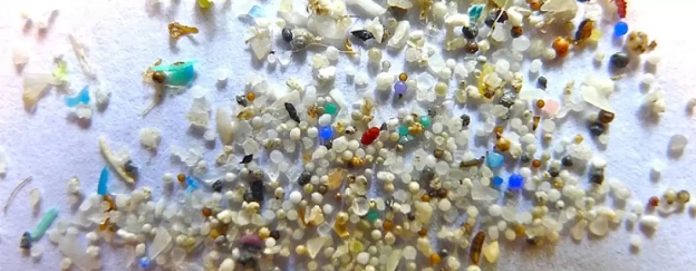
Have you ever thought about how tiny plastic pieces, so small you can hardly see them, can travel around the world?
Well, a group of scientists from Cornell University has discovered something surprising about these tiny plastics, known as microplastics, and how they move through the air.
Microplastics are everywhere – in the ocean, on land, and even floating in the air. They come from all sorts of places, like broken-down soda bottles or tiny bits from tires.
When these plastics get really small, they can be picked up by the wind and travel long distances.
The Cornell team, including Qi Li from the Department of Civil and Environmental Engineering and other experts, found out that the shape of these microplastics plays a huge role in how far they can travel.
Before this, most scientists thought these tiny plastic pieces were mostly round, like little spheres.
But the Cornell research shows that many of these microplastics are actually flat, like tiny, thin fibers. And this flat shape lets them stay in the air longer and travel farther.
This discovery started with Li reaching out to Natalie Mahowald, an expert in how things move in the air, and Donald Koch, who knows a lot about how particles behave in moving air.
Together, with their team including postdoctoral researcher Shuolin Xiao and doctoral student Yuanfeng Cui, they built a new computer model to better understand how these microplastics move.
What they found was pretty eye-opening. By treating these flat microplastics as if they were round, previous studies got it wrong about how quickly they fall to the ground.
With their new model, the Cornell team realized that because these microplastics are flat, they actually float in the air about 450% longer than what was previously thought.
This means they can travel much further than we believed before.
Another interesting point the team found is that the ocean might be sending more of these microplastics into the air than we knew. This is important because knowing where these tiny plastics come from can help us figure out better ways to deal with them.
This research isn’t just about understanding microplastics. It can also help us learn about other small things that get into the air, like dust and pollen.
The team’s work, which was supported by the National Science Foundation and used resources from the National Center for Atmospheric Research, is a big step in understanding how these tiny plastic fibers move around our planet.
This is crucial because if we know where these plastics are coming from and how they’re moving, we can make better plans and policies to reduce pollution and protect our environment.
So next time you see a plastic bottle or a worn-out tire, think about the journey its tiny pieces could take, floating in the air, and how scientists are working hard to understand and manage this invisible traveler.
The paper, “Long-Distance Atmospheric Transport of Microplastic Fibres Influenced by Their Shapes,” was published in Nature Geoscience.



